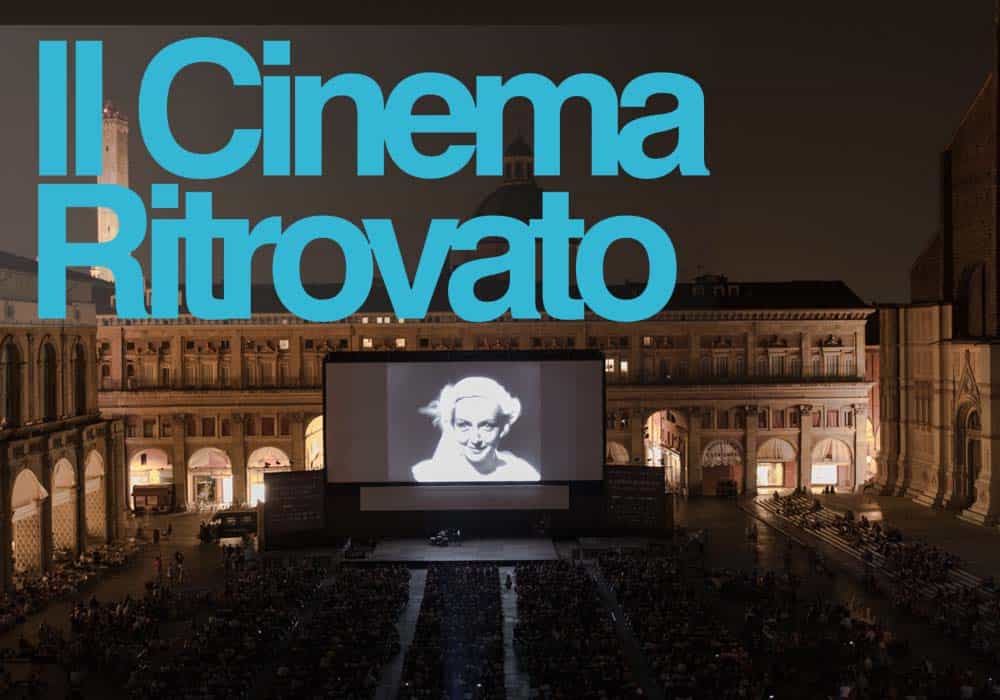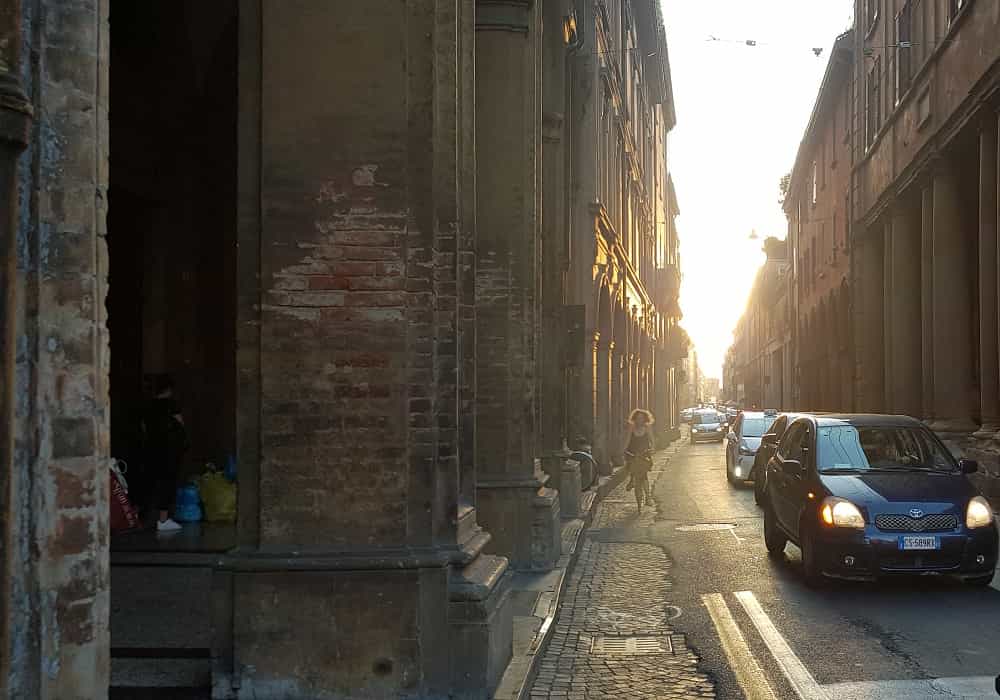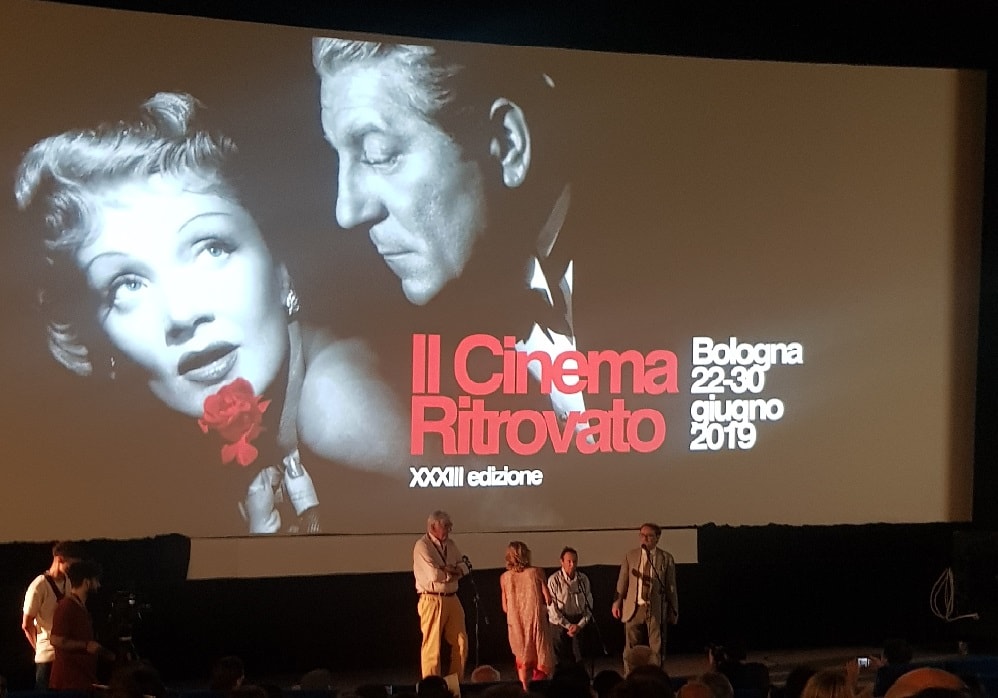B. P. Flanagan recounts his experience attending the 2019 Il Cinema Ritrovato, the world’s premiere festival for restored and rediscovered cinema, located in Bologna, Italy.

I spent my first night at Bologna’s Il Cinema Ritrovato sitting on the pavement in the Piazza Maggiore among 5000-odd rapt audience members, a mix of festival nerds and locals. In silence, we watched the 69-year-old Los Olvidados (1950), Louis Buñuel’s social surrealist masterpiece of poverty-stricken street urchins. Screening such a film in the square creates a heightened awareness of our surroundings, with the film’s Mexico City’s crumbling architecture creating a harsh contrast to the pristine historical landscape of a northern Italian city home to the oldest university in the world (1088!).
These free nightly screenings act as the headline event at Il Cinema Ritrovato, which, in its 33rd year, has long been established as the world’s premiere festival for restored and rediscovered cinema. American accents are as common to the ear as Italian, and faces from throughout the global rep scene keep popping up. 4,000 passes were sold this year. With passes at 100 euros (half price for students!) the locals aren’t barred from their own cinemas. I attended for five days, half the duration of the festival, and saw 30 films without hitting the festival fatigue wall. So it’s well worth the expense; flights and accommodation are very cheap if you book far enough ahead, meaning tourists won’t break the bank either.
Across a vast catalogue and 15 screens around the city centre, there’s something for each type of cinephile. Three of the strands — 16mm, Technicolour, and 1899: Cinema Year Four — give nitrate-heads a chance to geek out. Strands centred on stars (Jean Gabin, Musidora, Buster Keaton) afford the opportunity to watch our heroes develop across decades. Devoting oneself to a themed retrospective (Golden Age of Korean Cinema, Inventing West German Cinema) or even just catching up on the latest ‘Recovered and Restored’ films offer a simpler pathway through the festival.
Bologna appears driven by its student population rather than the focus on tourists that hovers around many other Italian towns. There must be something in the Olive Oil, as trendy, gorgeous Italians line the streets of small bars and eateries. It’s the proud left wing identity (the city was the hub of resistance during WWII and was long Italy’s communist HQ), along with imposing red-hued architecture, which have earned Bologna the nickname ‘The Red City.’ There’s more graffiti than I’ve seen elsewhere in Italy, and seeing Antifa and Black Lives Matter slogans scribbled on thousand-year-old red walls brings the past sharply into the present. Which is exactly what the festival does.

Between the Instagrammable locations, street food, and exclusivity of content, I expected a festival driven by hipster ideals. But the audience largely skews older: one elderly woman I sat with knitted throughout Felix Feist’s harsh Noir Tomorrow is Another Day (1951), and the young people here are genuinely enthusiastic about making new discoveries and filling in the blanks of their cinema knowledge. Like me. I see Federico Fellini’s Roma (1972) for the first time (curiously undervalued among Fellini’s filmography, it takes a Joycian approach to Rome and comes up with some of the very best sequences of his career), and Keaton’s meta-masterpiece The Cameraman (1928). I finally get a chance to see a Budd Boetticher Western in Ride Lonesome (1959), which is more expansive, patient, and thus, also more spiritual than anything else I have seen in the genre.
Rather than cooler-than-thou aloofness, a congenial atmosphere envelops screenings. Everyone is here for the same reason. There’s no hierarchy; if a screen runs out of seats, patrons fill the isles. The terrible air conditioning doesn’t put anyone off; volunteers hand out fans. This general ambience is intoxicating, and I’m sure I end up overrating some films as a result. Is Indiscreet (1958) an undersung masterpiece by Stanley Donen that has almost perfect framing and delicate performances? Or are my critical faculties just paralysed by the packed auditorium laughing and clapping along to a vintage print? Cary Grant and Ingrid Bergman hold each other with cat-like chemistry, and their giant faces render me a child. This is the cinema experience we aim for, to be purely charmed by the thing for what it is, away from the online discourse, from hype or expectation. To merely go to the movies.
That comfort in like-minded strangers creates some inspiring moments of participation. In The Clowns (Fellini, 1971), which looks unbelievable in a new restoration, a scene featuring a strip of nitrate being set ablaze gets an audibly shocked reaction from the zealots who will still talk your ear off about film over digital. In Alexandria… Why? (1979), the whole audience gasps at one particularly majestic match cut. Youssef Chahine, a giant of Egyptian cinema whom I’ve never had the opportunity to be acquainted with before, is the subject of a retrospective that opens my eyes to a different vision of the possibilities of Arabic cinema than I’ve come across. Alexandria… Why? uses exquisite colour, Ophülsian camera moves, and free form editing to tell an autobiographical bildungsroman of its director.

One of the biggest triumphs here is how the programming forces the audience to reconsider our cinematic notions. In a 16mm presentation, George Méliès prints in 16mm are shown alongside 4K restorations. I’ve never seen an illustration of the film/digital divide like it. The digital copy looks as though someone has placed a sheet of glass over the projector, while the film seems liquid. To see the two side by side really brings tangible aspects of film into sharp focus.
I wonder if the programmers could do the same for contexts outside of the technical. The Hundred Years Ago: 1919 strand offers Anders als die Andern (Richard Oswald), considered the first sympathetic portrayal of homosexuality in cinema. Queerness comes up in so many films I see here, from Alexandria… Why? to Dario Argento’s Cat O’ Nine Tails (1971). The lack of a specific strand to put these films into direct conversation is conspicuous by its absence. Surely, an essential part of rediscovering cinema is to explore new contexts for old films. Without acknowledging queerness, an entire dimension of cinema is hidden, and the programmers are holding the festival back from embracing a more diverse, and open-minded audience.
And yet, I struggle to think of a British festival experience that could reach the same scale and accessibility of Ritrovato. Certainly, Film4’s Somerset House screenings are inaccessible at twenty pounds a ticket, and they don’t take the same risks by picking older films. I can’t imagine a boozy British audience having the midsummer patience for it. But maybe I’m not giving us enough credit. Bristol’s Cinema Rediscovered, fast becoming a cinephile institution, is making great waves with their attention to the archives and hyped up screenings of new restorations. Last year, they screened Flash Gordon (Mike Hodges, 1980) by the harbour. But can the Brits always rely on the weather like the Italians, who barely bat an eyelid at a 35-degree day?
In a summer of appalling blockbuster cinema that has hardly given cause to enter a multiplex, Il Cinema Ritrovato is a tonic. It reminds us to cast cynicism aside as we take our seats, and to appreciate the vast screens, the communal spaces, and the pleasures of ‘movie-going’ as an event as opposed to going to an event movie.
Il Cinema Ritrovato runs every June in Bologna. This year it took place on 22-30 June.
Recommended watching this summer: Joanna Hogg’s The Souvenir
Set in the 1980s, The Souvenir tells the story of a film student who gets into a difficult romantic relationship that simultaneously feeds her creativity and shakes her self-confidence. Our recent ebook Tour of Memories goes deep on the film and how Joanna Hogg and her team made it.

